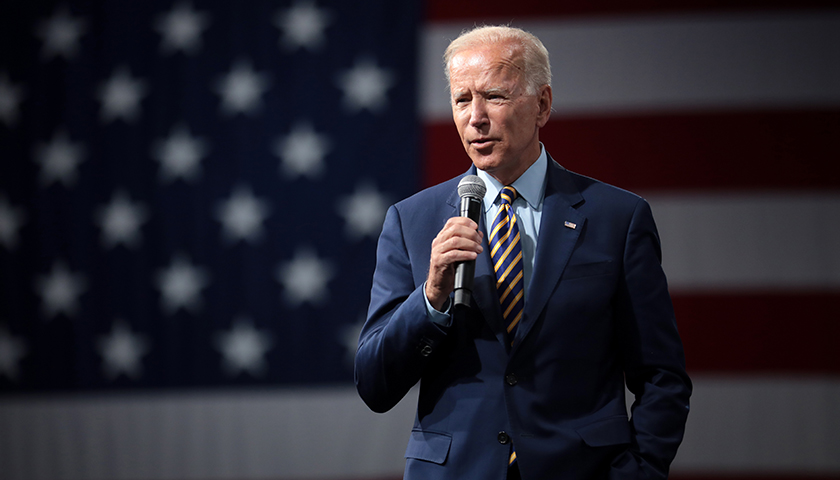by Edward Ring
If Joe Biden gets his way, the federal minimum wage will soon more than double, from the current $7.25 to $15 per hour. To quote our commander in chief, “if you work for less than $15 an hour and work 40 hours a week, you’re living in poverty.”
To rehash the minimum wage debate would be redundant. Anyone with business experience should see what’s going to happen. Many small independent businesses, retail stores, and restaurants that pay minimum wage will go under.
Meanwhile, major corporate chains will automate, shedding workers and raising prices, consolidating their grip on every market sector where they’re active. Unionized government workers will automatically get raises because their wages are indexed to the minimum wage—putting even more pressure on government budgets and taxpayers. People in the private sector who have spent decades learning a skill—and as a result can command wages upwards of $25 or $30 an hour—will become justifiably disgruntled, because they will no longer be making much more than minimum wage. The underground economy will explode.
And so on. And then there are the ongoing COVID-inspired, enhanced unemployment benefits. Why work? Working is for chumps.
While reason and common sense seem to be wasted on the economic wizards who advise Biden, the debate over the minimum wage nonetheless should be viewed in its historical context. Below right is an updated chart showing what the minimum wage would have been over the past several decades, if it were paid in today’s dollars.
As the chart suggests, if you believe in setting a minimum wage, there is an argument for raising it to something over $10 per hour to keep up with inflation. During the 1960s, ’70s, and ’80s, the inflation-adjusted minimum wage fluctuated between $9 and $10 per hour. In 1968, the minimum wage, expressed in 2020 dollars, would have been $12.37. But to raise it to $15 per hour has no historical precedent.

And let’s not forget the geographical context. Everyone, presumably including Biden and his economic advisors, knows the cost of living varies greatly from state to state. In California, where the median home price is $654,000, the federal minimum wage does not go nearly as far as it would go in West Virginia, where the median home price is $107,000. Moreover, the cost of living varies significantly within states. To use California again as an example, in the far north of the state, the median home price is “only” $350,000, whereas in the San Francisco Bay Area, the median home price is $1,225,000.
A Warning from California
The price of homes in California, rising far in excess of the rate of inflation, strongly suggests something else is at work to make life unaffordable for people earning minimum wage.
In 1968, the minimum wage was $1.60 per hour and the median price of a home in the Golden State was $23,000. In other words, the median home price was equivalent to seven years of income at minimum wage. Since the lowest home prices were well under the median, purchasing a modest home was within reach, or nearly so, for people earning minimum wage.
In 2020, by contrast, with the minimum wage at $7.25 and the median home price $654,000, the home-price-to-annual income (at minimum wage) ratio jumps to 45 years. At $15 per hour, it’s 22 years. The chances that a person can purchase a home today in California, even when earning $15 per hour, are exactly zero. What happened?
Home prices in California over the last several decades—especially within the last 20 years—have jumped far faster than the rate of inflation. This is the result of years of restrictions on home building, combined with years of restrictions on resource development which increased the costs of construction materials, combined with years of additional mandates and regulations governing home design. And California’s legislature is just getting started.
The state legislature now mandates that all new home construction be “zero net energy.” Think small windows, white roofs, automated lights that turn off if they don’t sense you in the room, all faucets and electric appliances remotely monitored by the utilities—a dystopian algorithmic micromanagement of our lives—and increased costs, even for energy. Whatever energy savings accrue to “zero net energy” households will be offset by “service fees.” Somebody has to pay for the “smart grid.”
Housing costs in California have also skyrocketed through land-use policies mandating “urban containment” and through efficiency mandates. But it isn’t just housing. Water and electricity have also fallen prey to artificial scarcity. This is a gold mine for utilities, whose profit percentages are fixed by the state Public Utilities Commission, to make billions by charging more per unit. It’s a gold mine for government workers, whose agencies will collect more in property taxes and utility taxes. It’s good for government pension funds, whose solvency depends on asset bubbles. But it has made California unaffordable for everyone else.
What Working Families Really Need
This is the model that needs fixing, not the minimum wage. Raising the minimum wage to $10 per hour would be reasonable based on its historical purchasing power. But the big changes have to come about through lowering the cost of living for ordinary Americans. These punitive runups in costs for essential assets—housing in particular—have greatly exceeded the official rate of inflation as reflected in the Consumer Price Index.
It was a political choice. It can be unmade.
If the Biden Administration and the Democrats running the U.S. Congress truly care about working families, they should pay less attention to the minimum wage and more attention to the policies—almost exclusively conceived and implemented by Democrats and their corporate allies—that have increased the cost of living. It is impossible to increase the minimum wage enough to counter policies that deliberately create artificial scarcity.
– – –
Edward Ring is a senior fellow of the Center for American Greatness and co-founder in 2013 of the California Policy Center.
Photo “Joe Biden” by Gage Skidmore CC 2.0.




